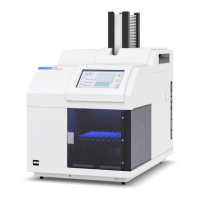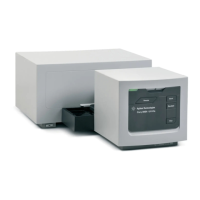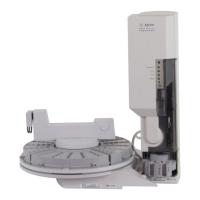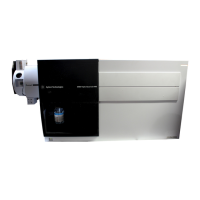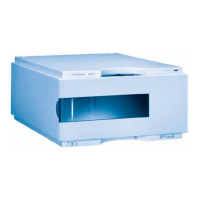5Methods
94 Operation Manual
ECD
ECD linearity
The ECD response factor versus concentration curve is linear for four orders of magnitude or
more (linear dynamic range = 10
4
or higher) for a broad range of compounds. You should still
run a calibration curve on your samples to find the limits of the linear range for your materials.
ECD makeup gas notes
If the carrier gas type is different from the makeup gas type, the makeup gas flow rate must be
at least three times the carrier gas flow rate.
ECD sensitivity can be increased by reducing the makeup gas flow rate.
ECD chromatographic speed (for fast peaks) can be increased by increasing the makeup gas
flow rate.
ECD temperature programming
The ECD is flow sensitive. If you are using temperature programming, in which the column
flow resistance changes with temperature, set up the instrument as follows:
• Set the carrier gas in the Constant flow mode. Set detector makeup gas to Constant
makeup.
• If you choose to work in the constant pressure mode, the makeup gas should be set in the
Column + makeup = constant mode.
Recommended starting conditions for new ECD methods
Use the following information when selecting temperatures and flows. Maximum source
pressure must not exceed 100 psi. Use the maximum source pressure to achieve maximum
makeup flow rate.
<135 C, cannot turn on filament
If detector temperature goes below 120 °C, the filament turns off.
Detector temperature should be 30 °C to 50 °C greater than the highest oven ramp
temperature.
Table 9 Recommended starting conditions
Gas type Suggested flow rates
Carrier gas
Packed columns (nitrogen or
argon-methane)
Capillary columns (hydrogen, nitrogen, or
argon-methane)
30 to 60 mL/min
0.1 to 20 mL/min,
depending on diameter
Capillary makeup (nitrogen or
argon-methane)
10 to 150 mL/min
(30 to 60 mL/min typical)
Table 8 Recommended starting conditions (continued)
Gas type Suggested flowrates

